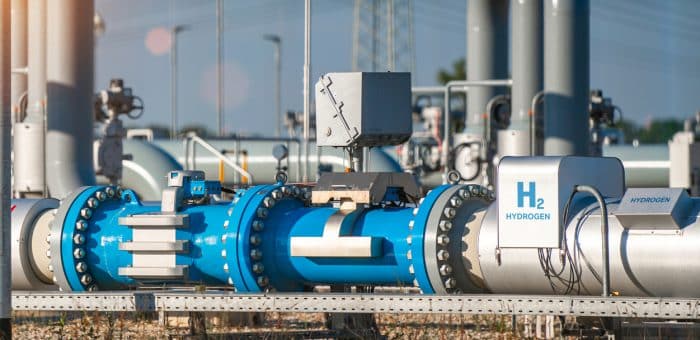Everything we do as humans has an impact on the environment. Your individual impact is known as your personal carbon footprint. This term refers to the amount of carbon dioxide or greenhouse gases you send into the atmosphere, either directly or indirectly. In other words, every time you do something that requires the use of fossil fuels, you’re contributing to the world’s CO2 emissions.
With global warming concerns on the rise, more and more people are looking for ways to reduce their carbon footprints. Popular solutions include recycling, reducing home electricity consumption, and looking into alternative energy sources like solar and wind power.
In Texas, green, or renewable, energy plans are becoming more popular, too. With this type of plan, your energy provider purchases renewable energy credits that are equal to your electricity usage, allowing you to support the investment in clean energy generation.
Whether you’re looking for a green energy plan, a plan that works with your newly installed solar panels, or simply a more affordable plan, Power Wizard is here to help. Our online shopping tools make the process of finding and comparing your options faster and easier. We customize your results based on your unique needs, not the interests of the energy companies, so you can feel confident that you’re selecting a plan that’s ideal for you.
Have you ever wondered about your actual impact on the environment? Knowing how to calculate your carbon footprint will help you find out where you stand so you can take steps to start reducing it.
[carfirst]
How to calculate your carbon footprint using 5 key factors
When looking for ways to reduce their environmental impact, many people ask themselves, “What is my carbon footprint, anyway?”
As mentioned above, it’s the total amount of carbon dioxide you’re responsible for creating in your daily activities. Several factors make up your impact — your energy habits, your modes of transportation, and even your food choices.
Are you ready to calculate your carbon footprint? Here are five essential factors to consider.
1. Personal carbon emissions from your home
The electricity you use in your home comes from a variety of sources. Power plants throughout Texas use natural gas, coal, wind, nuclear, and solar energy. Wind, nuclear, and solar systems don’t release carbon dioxide to generate energy, but manufacturers do produce some when they build the necessary equipment.
While emissions vary by fuel source, U.S. power plants release an average of 0.85 pounds of carbon dioxide per kilowatt-hour (kWh) of electricity produced. You don’t directly create those emissions, but you likely use energy from the grid to power your home. As such, they are part of your carbon footprint.
Almost everything in your home relies on electricity. Some of your most energy-hungry appliances include your air conditioner, water heater, washer, dryer, and refrigerator. Even devices you leave plugged when you aren’t using them, such as your coffee pot, gaming consoles, and phone chargers, draw small amounts of energy known as phantom electricity.
If you aren’t sure of how much electricity your home uses, you can take a look at your past energy bills. You can also keep an eye on your power consumption with tools like a smart meter or an energy monitor.
2. Fossil fuels burned on airline flights
Do you travel by air? Many people rely on planes for work and leisure purposes. Flying is often faster and more convenient than other modes of transportation, especially if you’re going overseas. However, planes require a lot of fuel, which means they emit a lot of carbon dioxide. If you’re a frequent flier, your airline miles could make up a significant portion of your personal carbon footprint.
Carbon dioxide emissions from flying vary based on several factors, including:
- aircraft type,
- trip length,
- number of passengers, and
- cargo and passenger weight.
While air travel accounts for only 2.4% of global CO2 emissions, organizations predict that contribution will triple by 2050. What’s more, some flights generate more emissions per passenger than the average citizen of some countries. Burning fuel also emits other greenhouse gases and creates contrail clouds.
[carfirst]
3. Greenhouse gas emissions based on food choices
Everything you eat, from meat, seafood, and dairy to vegetables, fruits, and seeds, is responsible for CO2 emissions. Those emissions come from land use, farming, feed (for animals), packaging, and transportation.
In general, meat and dairy create the most greenhouse gases per kilogram of food, with beef, lamb, and cheese topping the list. On the other hand, fruits and vegetables typically create the least greenhouse gas emissions per kilogram.
When looking at how to calculate your carbon footprint, consider the types of foods you usually eat. Those who eat meat and dairy daily can cut their food-related carbon footprints by choosing less carbon-intensive meats or by substituting one or more weekly meals with vegetarian or plant-based options.
4. Annual consumption of fast fashion
“Fast fashion” refers to a specific design, manufacturing, and marketing method that focuses on the quick production of high volumes of clothing. It aims to replicate trends — which change quickly — and involves the use of lower-quality materials to bring affordable and trendy clothes to consumers.
There are a few issues with fast fashion:
- The industry has a heavy carbon footprint, making up 10% of total global carbon emissions (and experts predict that fashion emissions will increase by 50% by 2030).
- Endlessly creating new clothes requires a lot of water. It also contributes heavily to industrial water pollution.
- Synthetic fibers, although more affordable, come from heavily processed petrochemicals, or fossil fuels.
- There’s a lot of waste involved with fast fashion. Many pieces of clothing are worn a few times and then are thrown away. Some of the waste includes clothes that never make it to consumers.
5. Fuel efficiency of your transportation method
The fuel efficiency of your vehicle measures how far your car can go on a single gallon of gas. Every gallon of gas your vehicle burns produces nearly 20 pounds of CO2 emissions. In other words, the more gallons of gas your car uses to get around, the more greenhouse gases it puts into the atmosphere.
Several factors determine your exact fuel efficiency, including your specific vehicle (car, van, or truck), its condition, the ambient temperature, the driving conditions, and your driving habits. Some cars are generally more fuel-efficient than others. For instance, hybrid vehicles, which rely on gas and a battery, are more efficient than gas-only cars. All-electric vehicles create no greenhouse gas emissions at all when they run.
[carfirst]
Where to find an accurate calculation website
Seeing your actual carbon footprint can be an enlightening experience. However, trying to calculate your impact can feel like an impossible task. Some websites offer complicated equations that involve multiplying and adding various figures. Alternatively, you can use an online calculator to make the process easier.
One such calculator is PowerWizard’s Go Carbon Neutral calculator. It considers your address and the number of people in your home, along with your energy usage and transportation, eating, and shopping habits. It also helps you identify changes you can make and what impact those changes would have. You can also find a carbon footprint calculator here are Power Wizard.
Carbon footprint higher than you expected? Here’s what to do next
Everyone has a carbon footprint. If you find yours to be higher than you thought — even after implementing some environmentally friendly changes in your life — there are plenty of things you can do.
[carfirst]
To reduce your carbon footprint, consider making changes such as buying a hybrid or electric vehicle, limiting your air travel, and reducing your meat consumption. You can also make a number of changes in your home to reduce your energy consumption, such as replacing old appliances with more energy-efficient options, ensuring proper insulation, and investing in solar panels.
Another option to consider is getting an energy plan that supports your efforts, such as a green electricity plan or a plan that helps you get more out of your solar installation. That’s where Power Wizard comes in. We’ll help you find the right energy plan that not only helps you save money but also supports your endeavors to reduce your carbon footprint.
Visit Power Wizard today to get started!







